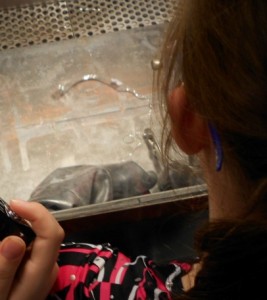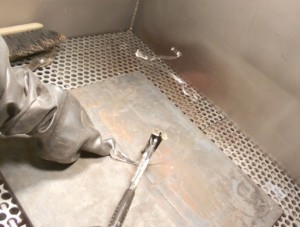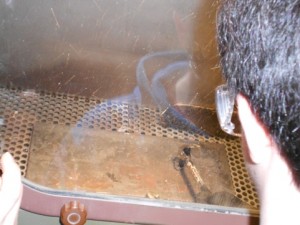Ever wanted to learn more about the science of glass? Here at the Museum, a group of area students are doing just that in the Junior Scientists program, new this year.
The small group of students from local Corning middle and high schools are in grades 7 through 9. The program began in March, and is wrapping up on June 12. Through hands-on experiments and behind the scenes tours of the Museum and Corning Inc. labs, the students are learning about science through the process and properties of glass.
Seventh-grader Pearl describes why she wanted to become a Junior Scientist:
As a visitor to The Corning Museum of Glass, I have been amazed by the glass artwork. When I was younger, I always thought glass was super fragile since I broke glass dishes often. Now I know that this isn’t always true, and that it can be very strong. For example, fiber optics are super thin glass that can bend without snapping. I think this is outstanding and proves my old belief, that glass is nothing but an easy-to-break decoration, wrong. There are many different types of glass and they are used for different things. To illustrate, glass is found in everyday objects such as tables, windows, cell phones, and jars. Not only is glass pretty, but it is useful.
Students in the program are learning all about glass and what it can do by investigating the material through experiments and research. The focus of their research this year is stress and tension in glass. In their weekly after-school meetings, the Junior Scientists have toured the Innovations Center at the Museum, watched a special glass breaking demonstration, and gathered information for their research at the Rakow Library.
- Breaking a Prince Rupert’s Drop
- Hitting the glass with a hammer
- The glass shatters into thousands of pieces
In an experiment that quickly became a favorite experience for many of the students, the group had a hands-on workshop at The Studio where they made – and more importantly, destroyed – their own Prince Rupert drops.
Each Junior Scientist was tasked with designing, creating, and carrying out their own experiment over the course of the program. To assist in their research, the students met and worked with scientists from Corning’s Sullivan Park on the concepts for their experiments. The Junior Scientists will present their findings at a finale event on June 12.





